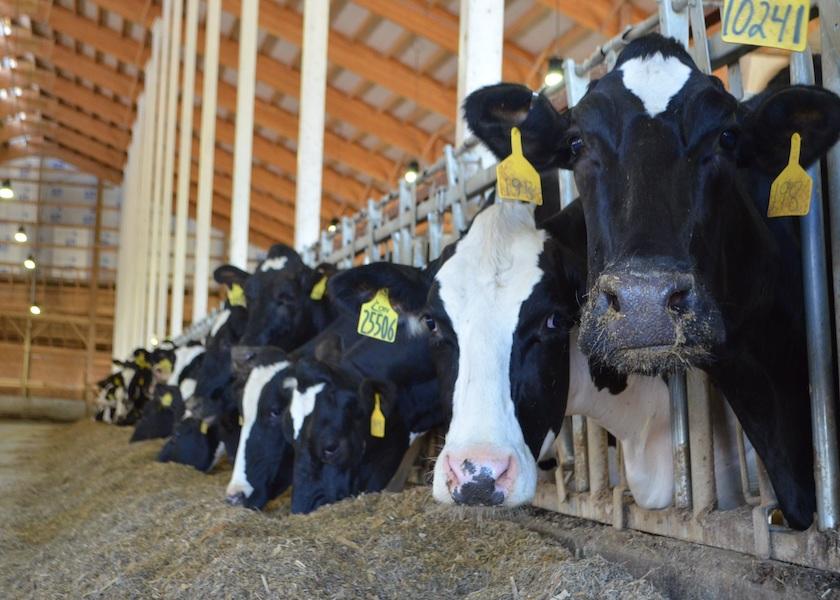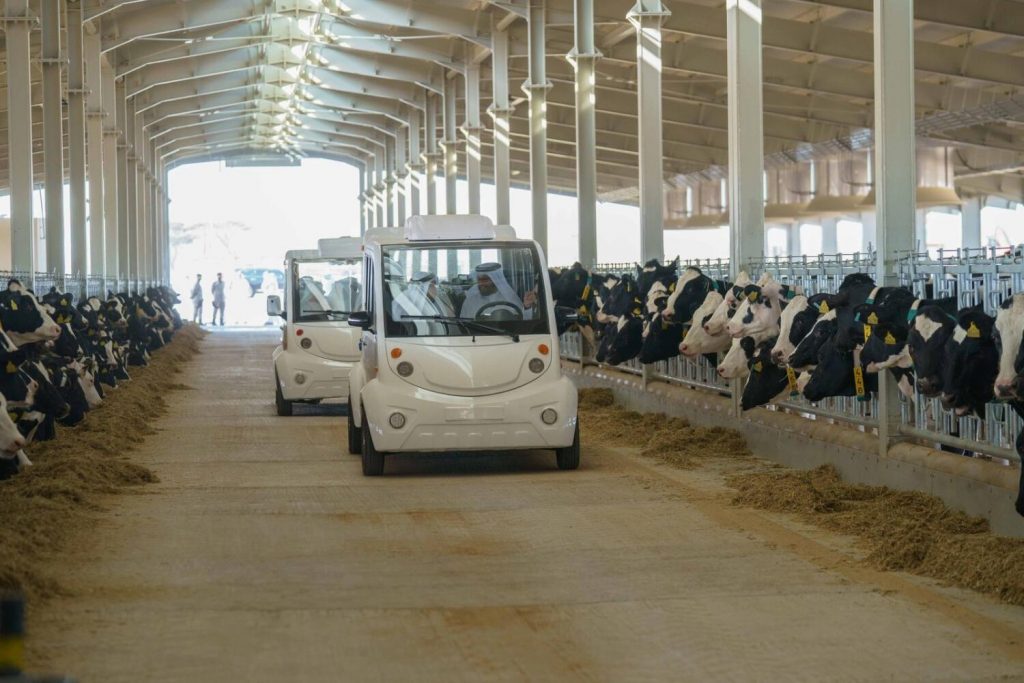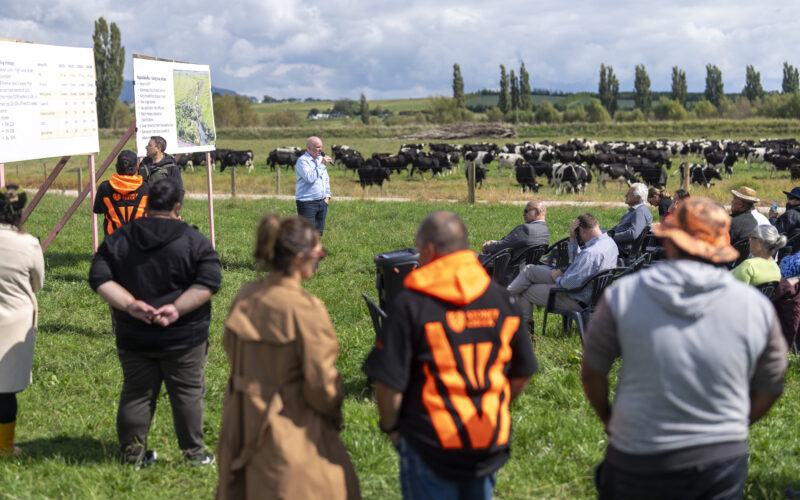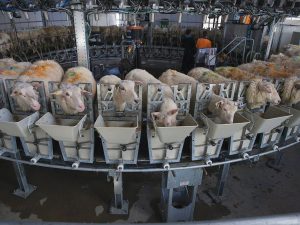The Agriculture Department lowered its milk production forecast in its sixth consecutive World Agriculture Supply and Demand Estimates report. The forecast was reduced due to slower expected growth in milk per cow while cow numbers were unchanged from last month’s report.
2024 production and marketings were projected at 226.3 billion and 225.3 billion pounds, respectively, down 1 million pounds on both from last month’s estimate. If realized, both would be down 100,000 pounds or 0.04% from 2023.
The 2024 Class III milk price was projected to average $16.20 per hundredweight, down 95 cents from last month’s estimate, and compares to $17.02 in 2023 and $21.96 in 2022.
The projected Class IV average, at $20.40, is up 30 cents from a month ago, and compares to the 2023 average of $19.12, and $24.47 in 2022.
This month’s U.S. corn outlook is for greater use for ethanol, feed and residual use and smaller ending stocks. Corn for ethanol was raised 25 million bushels to 5.4 billion. Feed and residual use was increased 25 million to 5.7 billion. Ending stocks were lowered 50 million bushels to 2.1 billion. The season-average farm price was lowered 5 cents to $4.70 per bushel.
The soybean outlook includes lower imports, residual, and exports, and higher ending stocks. Soybean trade was reduced on pace to date and expectations for future shipments. Soybean ending stocks were raised 25 million bushels to 340 million. The season-average soybean price was forecast at $12.55 per bushel, down a dime. Soybean meal and oil prices were unchanged at $380 per short ton and 49 cents per pound, respectively.
Avian influenza is bovine
Dairy industry attention remains on the influenza outbreak, which numbered 28 cases in 8 states. Restrictions on dairy cattle movement are now in place in 18 states.
The American Association of Bovine Practitioners says this infection in cattle is not the same as the highly pathogenic avian influenza (HPAI), and referred to it as Bovine Influenza A Virus (BIAV).
Speaking in the April 15 “Dairy Radio Now” broadcast, HighGround Dairy economist Betty Berning said dairy cows get sick but can and do recover, unlike poultry flocks where the birds are euthanized or die rapidly.
The transmission method is still unclear, according to Berning. “We know it originates in wild waterfowl and that’s how the cows were getting sick but not much is known beyond that.” Dairies are encouraged to limit bird exposure and all traffic into and out of farm properties.
StoneX economists Nate Donnay and Dustin Winston believe the number of cases is closer to 100. The disease has been identified, they say. “There isn’t any treatment for it. Some farmers are choosing to handle it quietly. That means the confirmed number of cases from the USDA probably won’t be a good indicator for how widespread the problem is and the impact will show up in prices first, and then eventually in the milk production data.”
Dairy loses in WIC
The National Milk Producers Federation and the International Dairy Foods Association expressed disappointment in the final rule issued last week to update the Special Supplemental Nutrition Program for Women, Infants and Children. The rule maintained proposed cuts to dairy in WIC.
“NMPF is disturbed by the decision to reduce access to the essential nutrients dairy adds to the diet,” said Gregg Doud, NMPF president. “Nutrition science demonstrates that dairy products like milk, yogurt and cheese are especially important for women, infants and children; meanwhile, nearly 90% of Americans don’t meet the number of dairy servings recommended by the 2020-2025 Dietary Guidelines for Americans. Milk, cheese, and yogurt are three of the five top redeemed items through WIC. They also provide three of the four nutrients of public health concern identified in the 2020 guidelines.”
Flirting butter
CME block Cheddar climbed to $1.57 per pound last Tuesday, then lost 6 cents Thursday, but rallied Friday to finish at $1.5350, up 2 cents on the week and 24 cents below a year ago.
The barrels marched to $1.5675 Monday, then backtracked, but also rallied Friday to close at $1.5725, up 4.25 cents on the week, 6 cents above a year ago, and 3.75 cents atop the blocks. Sales totaled 44 loads of block on the week, 21 on Friday alone, and 20 of barrel.
Monday’s block price jumped 3.25 cents on 2 trades and added 4.25 cents Tuesday on 11 more trades, hitting $1.61, highest since Feb. 28.
The barrels were unchanged Monday but jumped 3.75 cents Tuesday on 7 trades, and also hit $1.61, highest since March 6.
Milk accessibility is wide open in the Upper Midwest, says Dairy Market News, and Mid-Week spot milk prices were as low as $6 under Class. Cheese plant downtime remains a factor. Cheesemakers’ demand notes vary from slightly slow to slightly active though barrel interest has quieted. Inventories are not yet a concern in the region.
Cheesemakers note strong production in the West. Milk output is strengthening with the seasonal spring flush. Plenty of inventory is available. Demand is steady to lighter and some report production continues to outpace demand. Export demand is steady to moderate as international buyers are buying more for immediate to short-term delivery.
Butter flirted with the $3 level last week, hitting $2.97 per pound Monday, highest since Nov. 6, 2023’s $3.01, but fell to $2.8925 Thursday and closed Friday at $2.92, 2 cents lower on the week and 59.25 cents above a year ago, on 14 sales.
Monday’s butter was unchanged but gained 2 cents Tuesday, rising to $2.94 on 3 trades.
Central buttermakers shared similar sentiment to previous weeks but changes are afoot regarding near-term production. Growth in inventories after consecutive months of widely available cream has some producers expecting to throttle down churning the next few weeks. Demand is holding but cream remains widely accessible.
Busy production in the West is noted as manufacturers work to build inventories following good first quarter and spring holiday demand. Cream generally remains available throughout the region. Domestic demand is strong to steady. International demand is steady to moderate.
Grade A nonfat dry milk fell to $1.1350 per pound last Tuesday but finished Friday at $1.1425, up a penny on the week and 1.25 cents above a year ago on 9 sales.
A trade took the powder down 0.75 cents Monday and did it again Tuesday on 4 sales, dropping to $1.1275.
StoneX says the powder market is “bobbling between discussions of weak global demand and concerns around future milk supply.”
Dry whey remains weak, closing Friday at 36 cents per pound, lowest since Oct. 16, 2023, down 3 cents on the week and a quarter-cent below a year ago. There were 26 sales on the week, highest since the week of Oct. 31, 2023.
Monday’s whey was unchanged but was up 2 cents Tuesday on 2 sales, hitting 38 cents per pound.
GDT up 0.1%
The Global Dairy Trade Auction weighted average inched up 0.1% Tuesday, following a 2.8% jump on April 2. Traders brought 38.9 million pounds of product to market, down from 41.3 million on April 2, and the lowest since Dec. 15, 2020. The average metric ton price inched up to $3,590 U.S., from $3,558 on April 2.
Anhydrous milkfat led the gains, up 1.7%, after gaining 2.3% on April 2. However, butter was down 1.4%, following a 3.1% rise. Whole milk powder inched up 0.4%, after a 3.4% rise. Skim milk powder was unchanged following a 1.4% rise on April 2.
Cheddar led the declines Tuesday, dropping 8.5%, following a 4.1% rise. Mozzarella was down 3.8%. Lactose was down 1.3%, following a 3.1% drop on April 2.
StoneX says the GDT 80% butterfat butter price equates to $2.8968 per pound U.S., down 2 cents from April 2, and compares to CME butter which closed Tuesday at $2.94. GDT Cheddar, at $1.8023, was down 16.6 cents, and compares to Tuesday’s CME block Cheddar at a bargain $1.61.
GDT skim milk powder averaged $1.1524 per pound, down from $1.1568, and whole milk powder averaged $1.4830 per pound, up from $1.4726. CME Grade A nonfat dry milk closed Tuesday at $1.1275 per pound.
You can now read the most important #news on #eDairyNews #Whatsapp channels!!!
🇺🇸 eDairy News INGLÊS: https://whatsapp.com/channel/0029VaKsjzGDTkJyIN6hcP1K
















